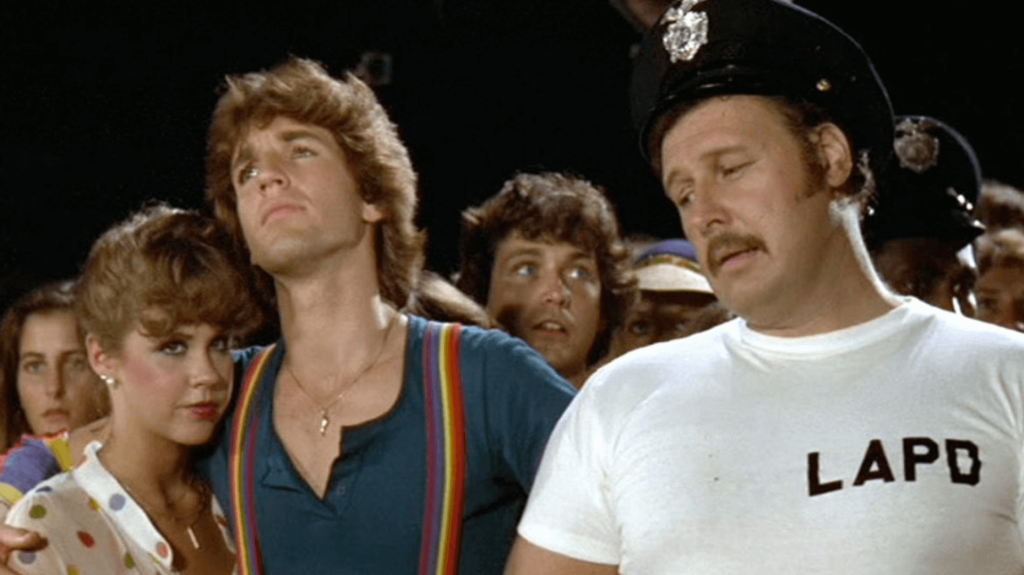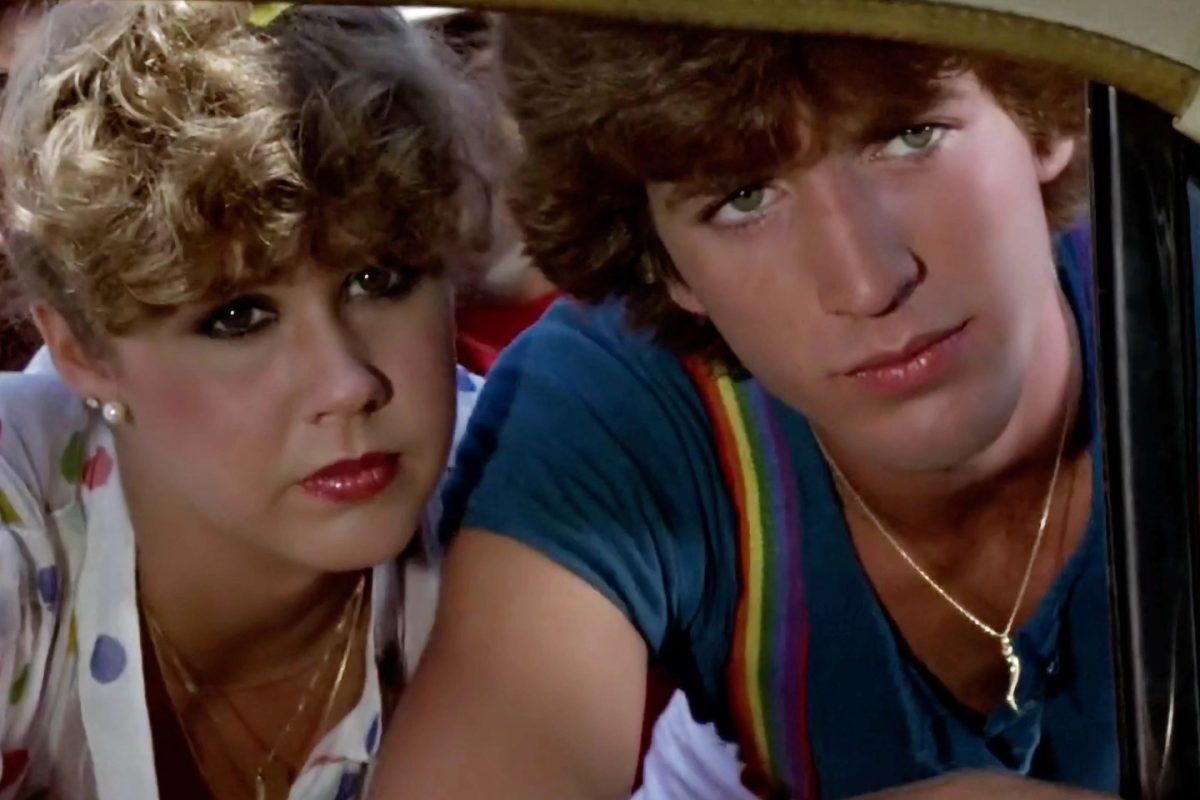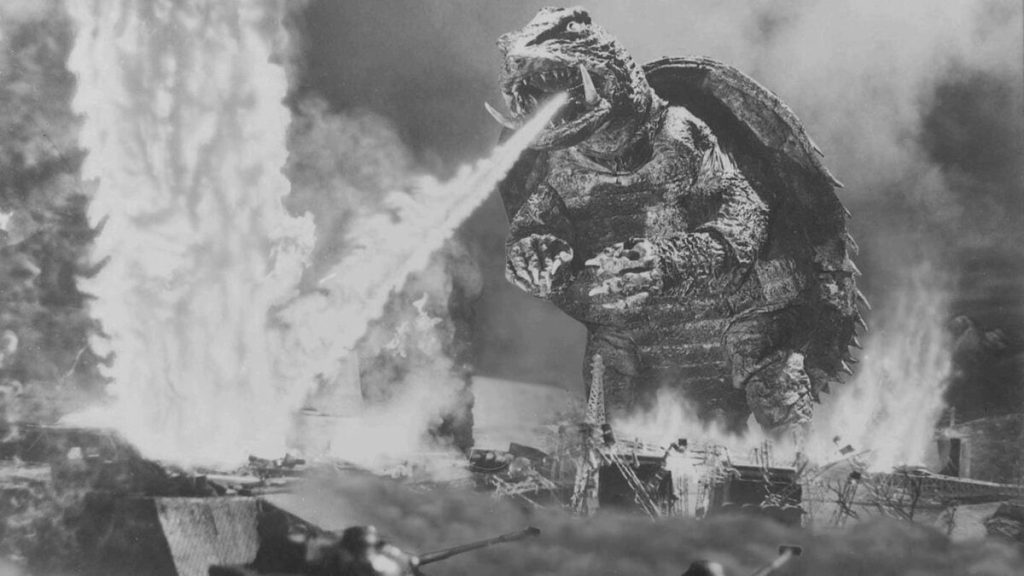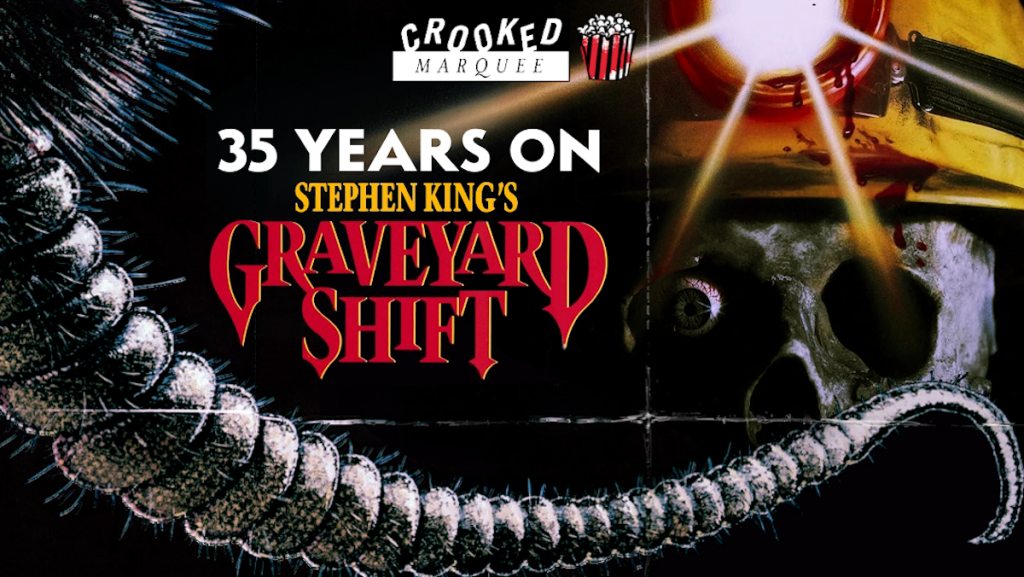Film’s highest calling is to capture dancing on roller skates. Cinema is an artform defined by motion, and dance is the apotheosis of human motion, exalted all the more by the camera, which moves as another partner in the dance. And dancing on roller skates is all that, but on roller skates. Is it mere coincidence that roller skating was achieving mass popularity across Europe and the Americas between 1880 and 1910, the same period in which the Lumière Brothers et al. were inventing the moving picture? Yes, obviously. Yet both reflect a similar impulse: towards mechanical invention that engages, extends and transforms natural human capacities. The film camera allows our eyes to see beyond what our eyes can see. The roller skate allows our feet to move in ways beyond how our feet can move. And where the crude logic of the motorcar is utilitarian – get where you’re already going but faster – motion pictures and roller skates create new vectors for beauty, grace, and momentum.
This is not the consensus. While most critics will rightly tip their hat to Charlie Chaplin roller dancing blindfolded in Modern Times, the short-lived micro-genre of roller disco movies were met with disdain. Roller Boogie (1979), Skatetown, U.S.A. (1979), and Xanadu (1980) all attempted, with varying but generally limited success, to cash in on the roller disco craze. At the fad’s height, there were 5,000 roller rinks in the US, but by the time any of these movies came out, disco was already dying, let alone its roller variant. They never stood a chance.
But Roller Boogie deserves more than that swift dismissal. In a just world, Roller Boogie would be such a cult classic that you could hardly move without tripping over a revival screening where you feel out of place if you don’t go in full costume. Instead, it’s sitting at zero percent on Rotten Tomatoes, without enough reviews to gain the shabby dignity of getting onto Wikipedia’s list of films with a 0% rating on Rotten Tomatoes.

Linda Blair plays Terry Barkley, a teenage girl living in a mansion in Beverly Hills with half a dozen Rolls Royces in the garage. Her parents show no interest in her – when she flippantly says she’s going to the beach to commit suicide, her mother intones, “That’s nice, dear” – except for when they get to brag to their friends about her being a world-class flautist, winning a Julliard scholarship. “So what, I’m a musical genius,” Terry sneers, “What a drag!”
There’s only one thing she really wants to do: win a roller boogie contest down at Venice Beach. She gets the best skater on the boardwalk to be her teacher: Bobby James (champion roller skater Jim Bray, in his one and only acting role – so far!), an aspiring Olympian. (It is unclear if Roller Boogie takes place in a universe so caught up in roller fever that roller skating is now an Olympic sport, or if Bobby has got his wires more than a little crossed. My guess is both.) Along the way, some evil businessmen-slash-mobsters threaten to burn the roller rink down – with the kids inside, no less – if the guy who runs it doesn’t sign on the dotted line. Terry, Bobby, and their friends set out to save it.
It’s a very funny, very silly movie, but one that’s more in control of itself than it gets credit for. It is not what Susan Sontag would call “naïve camp” – “dead serious… not kidding… not trying to be charming” – but nor is it playing at being campy, like, say, a John Waters movie. It is a love letter to naïve camp. It is ironic and sincere, and never stops being one to be the other. People got their heads around this just fine when Baz Luhrmann made Strictly Ballroom a decade and change later, but it was taken as a given that Roller Boogie couldn’t possibly be the way it is on purpose: “the dopiest movie of the year” (Janet Maslin in the New York Times) and “a travesty” (Greg Beebe in the Santa Cruz Sentinel, taking a quick break from calling Blair fat).
Like director Mark L. Lester’s later masterpiece, the Arnie action comedy Commando (1985), Roller Boogie functions both as a stellar example of a form and its parody. In Roller Boogie’s case, it’s a certain type of teen movie. Roger Ebert compared it to both the AIP Beach Party films and MGM Mickey Rooney/Judy Garland movies, and you can see the same basic formula in the teen movies that come after Roller Boogie: Dirty Dancing is another the working-class boy teaches rich girl to dance story, Sixteen Candles another girl blithely ignored by her parents. Lester revels in Roller Boogie’s clichés in a way that is at once knowing and earnest, mocking and celebratory. Of course Terry’s mom wants her to be with some creep from a rich family. Of course the cops would never listen to the kids about the evil businessmen, and of course the only good cop is the one who roller skates. Of course if you open the rink for one more night, just to let them have their roller boogie contest, everything will work out just fine. It executes clichés in a way that sends a thrill up my spine, and like a small child, I clap my hands demanding in delight, “Do it again! Again!”
And it’s on roller skates.
“Roller Boogie” is not streaming legally, because the world is a cruel and unjust place.



